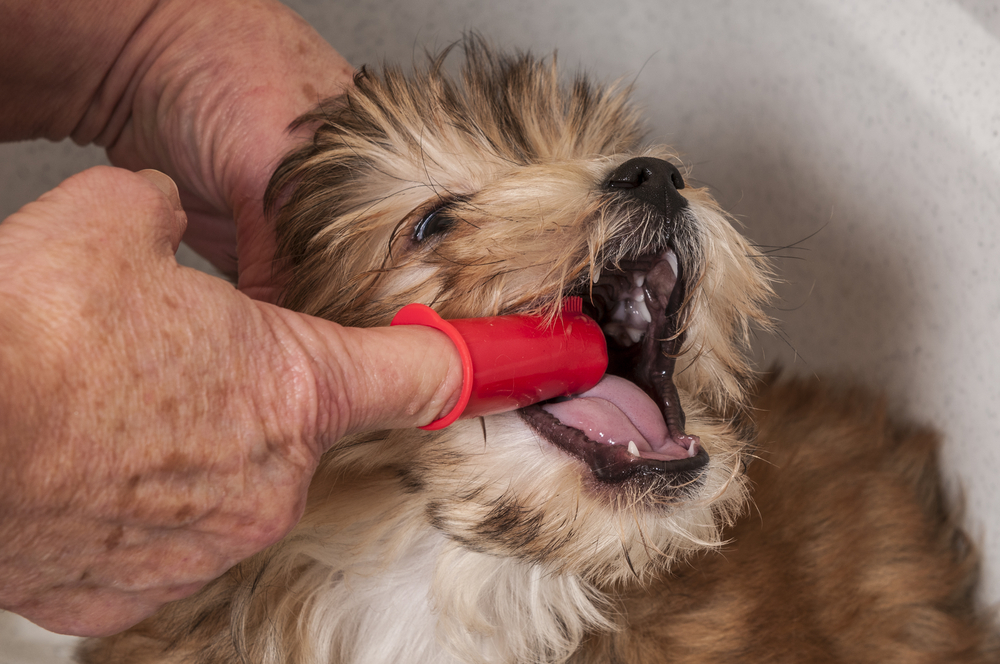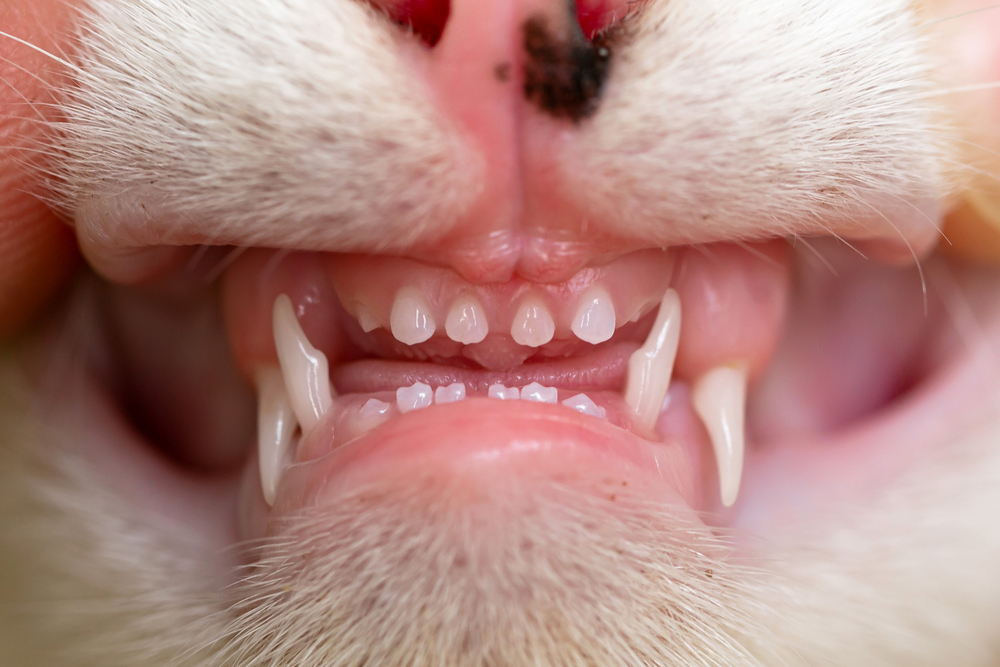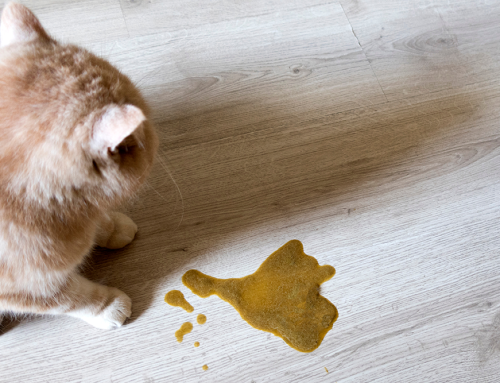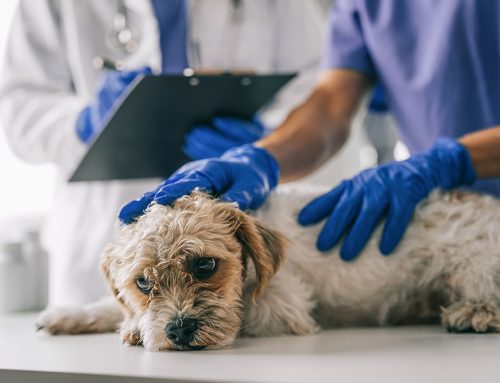Providing appropriate dental care for your pet is important to their overall health and wellbeing. Neglecting their oral health can cause periodontal disease, which can lead to significant health issues for your pet. Our team at Wellness Animal Hospital offers tips to protect your pet’s dental health.
#1: Know dental disease signs in pets
When your pet eats, the food particles left in their mouth attract bacteria, which form sticky deposits (i.e., plaque) on their teeth, and then minerals in their saliva accumulate in the plaque to form tartar. The bacteria that contribute to the plaque and tartar formation can invade under your pet’s gum line, and damage the structures that support their teeth. In addition, these bacteria can enter your pet’s bloodstream and damage organs throughout their body. Signs your pet’s mouth is affected include:
- Bad breath — The bacteria that accumulate in your pet’s mouth release sulfur compounds, causing their breath to smell bad. Stinky breath is one of the first periodontal disease signs in pets.
- Red, puffy gums — As the bacteria invade under the gum line, the gingiva becomes inflamed, red, and swollen.
- Excessive salivation — If the oral structures are irritated, your pet may salivate excessively.
- Blood — As the inflammation progresses, your pet’s gums may bleed, and you may notice blood on their chew toys or in their food or water bowl.
- Decreased appetite — Your pet may be reluctant to eat if their periodontal disease causes them pain or discomfort.
- Swelling — Your pet’s face or jaw may become swollen if their periodontal disease has caused an abscess.
#2: Ensure your pet gets regular wellness exams
Periodontal disease is easier to prevent than treat, especially in the advanced stages, but signs are not always evident. Yearly wellness exams are the best way to detect periodontal disease in your pet, in the early disease stages before significant problems arise. Most pets have some degree of periodontal disease by the time they are 3 years of age, and our veterinary professionals can detect signs during a routine physical examination. In addition, routine blood work performed during these exams can determine if your pet is affected systemically by periodontal disease. Once your pet reaches 7 years of age, they are at higher risk for conditions such as periodontal disease, and should be evaluated by a veterinary professional every six months.
#3: Ensure your pet receives regular professional veterinary dental cleanings
A professional veterinary dental cleaning is the only way to safely remove the bacteria from under your pet’s gum line, comprehensively evaluate your pet’s mouth, and address any oral health issues. Steps include:
- Health check — Your pet will receive a thorough physical examination, as well as screening blood work, to ensure they are healthy enough to undergo general anesthesia.
- General anesthesia — A professional veterinary dental cleaning requires general anesthesia to prevent your pet from experiencing unnecessary pain and stress. Sharp instruments are used to remove the hard tartar deposits from your pet’s teeth, and your pet could be injured if they are awake. In addition, a sleeping pet ensures they cooperate with our veterinary professionals, and accidental bite wounds are prevented. Your pet’s vitals are carefully monitored from the time anesthesia is induced until they fully recover, and their anesthetic level is adjusted as needed by a trained professional.
- Dental X-rays — An oral examination allows visibility of about only 50% of your pet’s teeth. Dental X-rays are therefore necessary for visualization of the structures below the gum line, and an accurate assessment of your pet’s oral health.
- Assessment — Every tooth in your pet’s mouth will be assessed for mobility and gingival pocketing, and this information detailed in their medical records. If any teeth are diseased or damaged, these issues will be addressed as needed.
- Cleaning and polishing — Your pet’s teeth will be thoroughly cleaned, and all plaque and tartar will be removed from their teeth and under the gum line. Their teeth will also be polished to remove the microscopic marks caused by the cleaning tools, to prevent bacteria from accumulating in these grooves.
- Medications — Your pet may need antibiotics or pain medications before, during, and after a veterinary dental cleaning, depending on their periodontal disease severity.
#4: Brush your pet’s teeth

Daily toothbrushing is the best way to maintain your pet’s oral health between professional veterinary dental cleanings. Most pets can be taught to accept the procedure, especially if they are started young. Tips to make the process successful include:
- Go slowly — Don’t expect your pet to understand what you expect of them at the first session. Start by getting them used to their mouth being handled, and then allow them to lick toothpaste from your finger. Gradually introduce the toothbrush as they become more comfortable.
- Use pet-friendly products — Ensure you use pet-specific toothpaste, since human products can be toxic to pets. In addition, ensure the toothbrush is small and soft enough to prevent gum irritation.
- Provide rewards — When your pet cooperates and allows you to brush their teeth, reward them with a high value treat.
#5: Provide dental chews to your pet
Chewing can help remove some plaque from your pet’s teeth. Provide products approved by the Veterinary Oral Health Council (VOHC) to ensure the products are effective, and avoid hard treats, such as antlers, hooves, and bones, which can injure your pet’s mouth.
Providing good dental care is necessary to ensure your pet remains healthy. If you would like to schedule a wellness exam or a professional veterinary dental cleaning, contact our team at Wellness Animal Hospital, so we can ensure your pet’s oral health is in tip top shape.







Leave A Comment